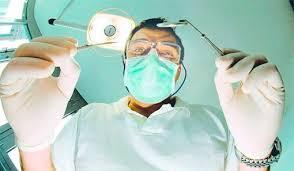
Show of hands - Who likes going to the dentist? There are some people that really do like going to the dentist, though the majority of people find it challenging. Surveys have shown that 45% of patients report having moderate dental fear, and between 10% and 20% of adults in the United States avoid seeking regular dental treatment due to extreme dental fear.
The problems associated with dental anxiety and fear have an impact not only on the oral health and treatment of a large percentage of the population, they can also greatly impact the dental clinician’s ability to adequately treat their patients.
Fear, Anxiety, or Phobia?
Dental anxiety, fear, and phobia are all related terms, yet they are distinct experiences. Dental fear is described as a reaction to a known danger, stimulus, or perceived threat. This uncomfortable reaction can be mental, emotional, or physical and can resemble the stress response of “fight or flight.”
Dental anxiety, on the other hand, is a nonspecific ambiguous feeling of unease. It tends to be more about the anticipation of the event, rather than any specific fear or concern. Dental anxiety can cause feelings of apprehensiveness, negative thoughts, and imagining that negative experiences will occur about an upcoming dental appointment.
Dental phobia is a significant fear and is usually excessive, irrational, and persistent. Dental phobias are present in response to either an actual threat, or the anticipation of that threat. What distinguishes a true dental phobia from the anxious or fearful patient is how intense the fear is. A patient with dental phobia will avoid the situation, does not seek regular oral healthcare, and is generally only seen for emergency visits.
Dental phobias stem from a variety of sources like bad experiences in the past, embarrassment of neglected teeth, stories told by others, fear of panicking in front of people, fear of losing control or of choking. A dental phobia can be so intense that it may cause some people to avoid the dentist for decades
The Hypnotic Process
Using hypnosis is an effective means to help reduce and relieve anxiety for patients with any dental fears, anxieties, and phobias. Hypnosis is a natural, super-focused state of mind. It may be more useful to think of it as the quieting of the conscious mind and allowing the subconscious mind to accept new ideas and suggestions more easily.
The hypnotic process for a patient with a high level of dental fear or phobia is designed to first dissociate from the fearful state, introduce new coping strategies, anchor into a relaxed and calm state, and set the expectation of future events. This process, when done in hypnosis, can successfully reprogram the former subconscious responses and reactions, replacing them with a more desired response.
The majority of hypnotic therapies start with an induction. The induction brings the client into hypnosis using simple instructions that direct their focus in specific ways. The induction process includes elements of relaxation that allow the client to settle into a very relaxed state, similar to meditation or sleep.
The next stage is deepening, a process that literally deepens the state of trance. Different hypnotic techniques can be used at different depths, so the hypnotist will use suggestion and instruction to allow the client to relax deeper as needed.
Throughout the process the hypnotist is using suggestions, stories, imagination, and metaphors to untangle the fears, instill new coping strategies, and anchor in a calm, relaxed state that the client can call on anytime in the future, anywhere they like.
During the session the hypnotist can guide the client through imaginary trips to the dentist where they can experience feeling calm and in control. Since imagination is the language of the subconscious mind, these methods help to reprogram the expectations of what going to the dentist is like.
The session ends when the client is emerged from hypnosis. Many clients say that they feel as if they’ve just woken up from a long nap, and that they feel relaxed, refreshed, and wide awake.
What Hygienists and Dentists Can Do
Practicing formal hypnosis requires specialized training and certification, yet other tools such as guided relaxation and guided imagery can be learned easily by the hygienist and provide enormous benefit for the patient and practitioner as well. When a patient is in a more relaxed state, they can be more compliant during their dental treatment, have fewer complaints and complications, require less medication, and heal faster.
Dentists and hygienists can guide their patients with imagery and carefully chosen words that allow the patients to relax during procedures and exams, giving their patients a more positive experience.
Many professional hypnotists offer training for dental and medical professionals in using hypnotic strategies in their practices.
Referral to a qualified professional hypnotist is appropriate when the level of fear, anxiety, or phobia is beyond what can be easily managed by guided relaxation and guided imagery techniques in the dental office.∎
Karen Gray is a Certified Hypnotist, Registered Nurse, and Director of Green Mountain Hypnosis. For more information visit www.greenmountainhypnosis.com, email karengray@greenmountainhypnosis.com, or call (802) 566-0464.